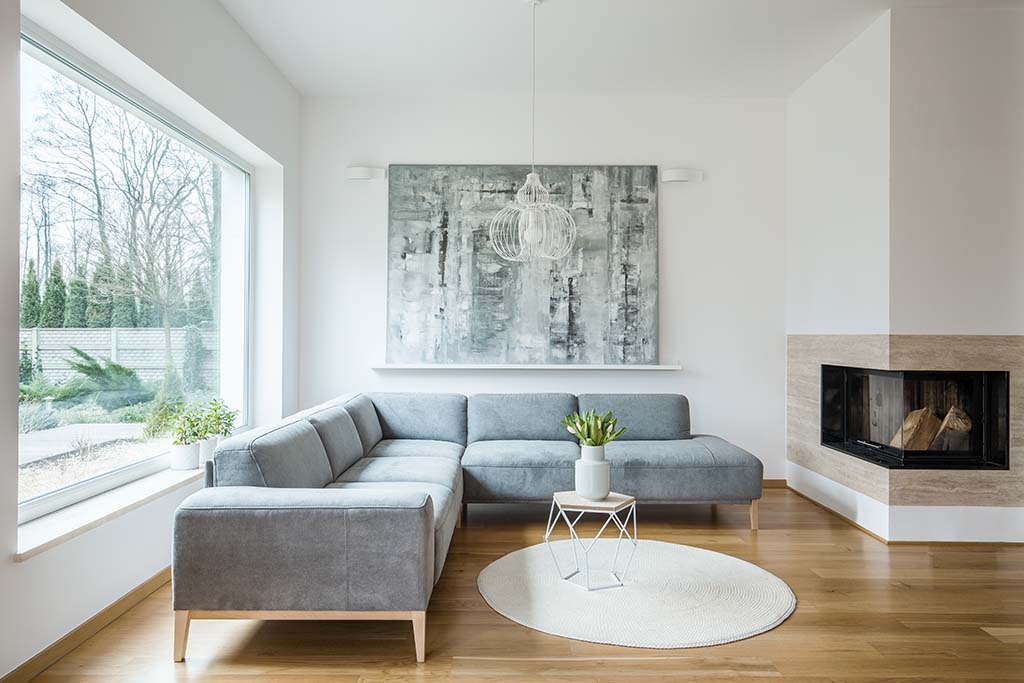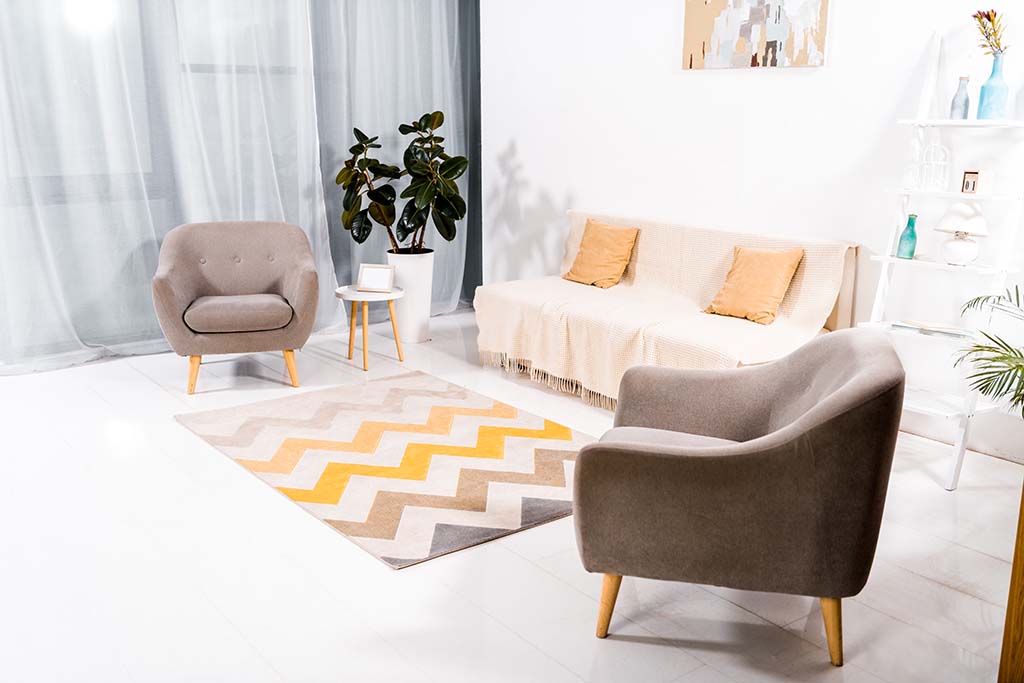
Every room has its own unique character, and that character is influenced, in large part, by the color of the walls. But the true shade, the shade that your eye perceives, isn’t solely determined by the paint itself. Instead, it’s a dance of pigment and light.
Interior lighting, whether it streams through windows or is provided by fixtures, profoundly alters how a paint color appears. Just as sunlight and moonlight can turn the ocean from blue to silver, the light in your home can transform your walls throughout the day.
Sunlight, ever-changing in its intensity and angle, has a significant say in how we perceive the colors around us. As the sun charts its course across the sky, the direction from which a room receives light changes. This dance of daylight plays upon our walls, making paint colors come alive in varying shades.
Rooms with windows facing north have a unique challenge and opportunity. The light they receive is often consistent but cooler, bathing spaces in a bluish hue. This can diminish the vibrancy of some colors.
However, it also offers a chance to create calm, serene spaces. For north-facing rooms, consider using colors like deep ocean blues, soft grays, or muted greens. These shades not only harmonize with the cool lighting but can also make a room feel sophisticated and cozy.
If north rooms are bathed in blue, south-facing rooms are drenched in gold. The sun at its highest intensity shines directly into these spaces, making them bright and often imbuing a warmer tone.
This can make rich and dark colors pop with vibrancy and lend pastel shades a luminous quality. Think of sunlit terracottas, peachy pinks, or even a bold sunflower yellow to maximize the potential of these rooms.
Mornings in east-facing rooms are bathed in a warm, yellowish hue, making them feel cozy and invigorating. As the day progresses, this warm glow gives way to cooler, bluer shades.
This shift means that versatile colors, those which can play well in both warm and cool lighting, shine in these spaces. Soft teals, muted mauves, or even neutral beiges with slight yellow undertones can adapt to the changing moods of these rooms.
As the day winds down, west-facing rooms come alive. The setting sun casts a rich, warm golden glow, reminiscent of the much-coveted “golden hour” in photography. This enchanting light can make rooms feel cozy and intimate.
To complement this, opt for colors that reflect the warmth, such as earthy browns, warm grays, or even deep, rich reds. These shades will not only harmonize with the evening light but will also make the room a perfect retreat as dusk approaches.

Low-light rooms can pose a challenge when it comes to interior design, but with the right choice of paint, these spaces can exude warmth, depth, and sophistication. The key is to understand how different shades react under artificial lighting and to select those that enhance the ambiance, rather than making the room feel more confined.
Warm White: A go-to choice for many, warm white can instantly brighten up a dark room. Unlike stark whites, which can sometimes seem too clinical, warm whites have a hint of yellow or beige that imparts a cozy feel. It pairs perfectly with any type of lighting, especially in rooms with cooler light sources.
Soft Pastels: Colors like muted lavender, sage, and soft peach can reflect more light, making the space appear more expansive than it is. These shades don’t absorb as much light and work wonderfully in creating an illusion of brightness.
Neutral Grays with Warm Undertones: Gray can be a versatile choice, especially if it has warm undertones. In a room dominated by artificial lighting, such a shade can balance out the tones, ensuring the space doesn’t feel too cold.
Muted Yellows and Beiges: These warm-colored hues can offset the effects of cooler light sources. A muted sunflower yellow, for instance, can evoke feelings of cheerfulness in a dark room without being overpoweringly bright.
Light Reflective Blues: Think of a soft sky blue or a subdued teal. These colors, while on the cooler spectrum, can be quite reflective, especially under artificial lighting. They can provide a hint of color without darkening the space further.
When choosing paint colors for a room with limited natural light, it’s essential to consider the type of lighting fixtures and light bulbs you’ll be using. For instance, rooms with predominantly cooler light might benefit from paint colors that exude warmth, and those with warmer light might benefit from shades that introduce a touch of coolness for balance.
Finally, it’s always a good idea to test paint samples directly on walls. Observe them at different times of the day and under varied lighting conditions. This helps ensure that the chosen shade complements both the room and the artificial lighting in the best possible manner.
Every room in a home has a purpose, and understanding that purpose is pivotal when deciding on paint colors and lighting. The interplay between color and light can either enhance or hinder the mood and function of a space. Let’s delve into a couple of these spaces to illuminate the choices and their potential impacts.
Dining Room: Traditionally a place for gatherings, meals, and conversations, dining rooms benefit from warm, inviting colors. A shade like burgundy, with its rich and deep tones, can create an intimate atmosphere for evening meals.
But what if your dining room is a darker space? Opting for lighter colors, like peach or a soft terracotta, can help reflect available light, making the room appear brighter and more spacious. Complementing these shades with white trim can also add a touch of elegance and brightness.
Living Room: Living rooms are multifunctional spaces, often catering to relaxation, entertainment, and socializing. Neutral tones, like grays with blue undertones, can create a calm backdrop, while pops of bolder wall color can add vibrancy.
If you’re dealing with a darker room, consider choosing a color with a higher light reflectance value. This ensures that even in low light, the room feels open and welcoming.

Choosing the right hue for your walls is an art, further nuanced by the science of light. It’s not just about selecting a color you love but understanding how it will look under different light sources and during various times of the day. This is where professional expertise becomes invaluable.
Whether you’re contemplating a deep, darker color to provide contrast and depth or looking for a light, airy shade to brighten up a space, BCI Painting ensures that your choice not only elevates the aesthetics but also aligns with the intended ambiance and mood of the room.
Every home has its unique charm and challenges. Whether you’re looking to enhance a naturally bright space or trying to illuminate a darker room, the right color choice can make all the difference.
When you have professionals like BCI Painting by your side, you’re assured of spaces that are not just beautiful, but emotionally resonant. Let your home be a true reflection of you. Trust the experts and let every room tell its story. Reach out to BCI Painting today for a color consultation and see your home in a whole new light.